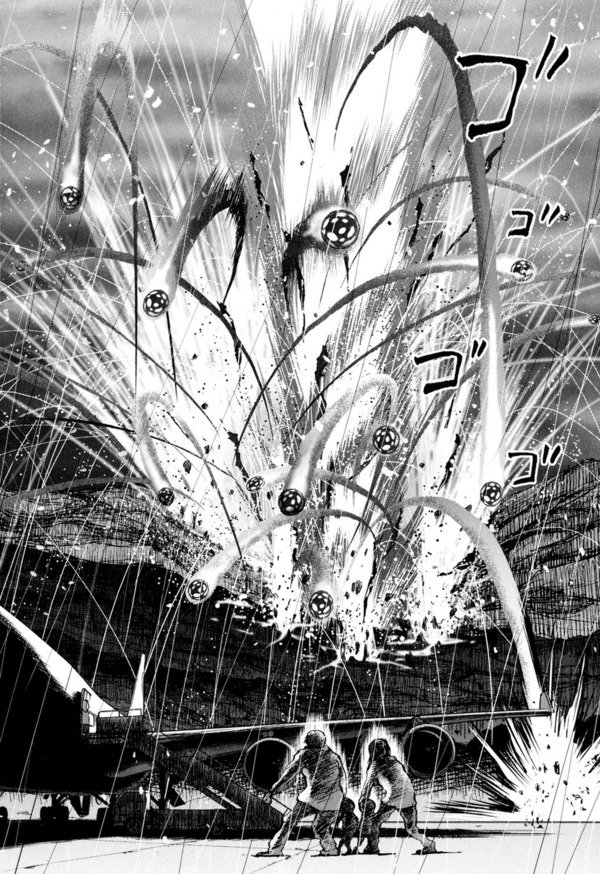Nippon Chinbotsu
dal 14/1/2013 al 20/4/2013
Segnalato da
14/1/2013
Nippon Chinbotsu
MAK Austrian Museum of Applied Arts / Contemporary Art, Wien
Japan Sinks. A Manga. The exhibition takes this well-known example as a basis to explore the visual aesthetics and graphic-art quality of manga, which have risen into a mass phenomenon of contemporary culture far beyond the isles of Japan.

Curator Johannes Wieninger, Curator, MAK Asia Collection
With the Nippon Chinbotsu manga series which is about the sinking of Japan after a
series of earthquakes, the manga-ka (manga or comic artist, cartoonist) Tokihiko
Ishiki produced a megaseller that has remained popular until today. The MAK
exhibition Nippon Chinbotsu. Japan Sinks. A Manga takes this well-known example
as a basis to explore the visual aesthetics and graphic-art quality of manga, which
have risen into a mass phenomenon of contemporary culture far beyond the isles of
Japan.
Ishiki took the inspiration for his manga series from the best-selling novel Nippon
Chinbotsu, first published 1973 and adapted into several movies, by science fiction
writer Sakyou Komatsu (1931–2011). The book describes the fictitious submergence
of the whole of Japan, one of the most earthquake-endangered areas in the world,
following several cataclysmic earthquakes and passes epic criticism on the progress-and-technology-obsessed Japanese society of the 1970s and ’80s.
Working closely together with Komatsu, Ishiki combined the novel and the visuals of
the 2006 movie made by anime specialist Shinji Higuchi into a highly successful
manga, which appeared in weekly installments between 2006 and 2009 and was also
published as a 15-volume pocketbook series.
Beginning with the predicted doom of Japan, which, according to one scientist, is
about to be entirely destroyed within only 322 days by a chain-reaction of disastrous
earthquakes, Ishiki’s manga interweaves several narrative strands, of which the two
most important address the questions of if— and how—the Japanese population can
be evacuated and eventually rescued, as well as of how the threatening uncontrollable
destruction of a high-technology nation might be averted. Unlike the movie, the
manga has no happy ending—Japan goes under.
The MAK exhibition focuses on the graphic-art qualities of Nippon Chinbotsu. The
genesis of this manga is traced through original drawings, from the first sketches of
ideas to the different stages of the fine drawings and to the printed weekly comic-strip sequels. Animated films make it possible to “look over Ikishi’s shoulder” and to
witness the meticulousness and patience with which he developed his manga.
Selected blown-up graphic-art prints bring out the filmic element of the originally
much smaller comic strips.
Born in Tokyo, Ishiki first made a name for himself as a sports manga artist. His
breakthrough was a series named Derby Jockey (1999–2004), which made him a
successful manga artist known well beyond the borders of Japan. What characterizes
his manga drawing is his free and dynamic pencil work; there is hardly another artist
who could have rendered the earthquakes with such graphic and visceral impressiveness.
Based on the theory that manga, like formerly ukiyo-e, Japanese colored woodblock
prints, have an influence on the development of visual culture, the MAK Asia
Collection has worked for years on building its own collection of manga. After
UAAAAA!!! MANGA. On the Aesthetics of a Trash Culture (2005), Nippon
Chinbotsu. Japan sinks. A Manga now is the second exhibition in which the MAK
puts the focus on manga as a possible artistic expression beyond “official art”.
Press contact
Judith Schwarz-Jungmann (Head), Sandra Hell-Ghignone, Veronika Träger, Lara Steinhäußer
T +43 1 71136-229, F +43 1 71136-227 presse@mak.at
Press Preview Tuesday, 15 January 2013, 10:30 a.m.>
Opening Tuesday, 15 January 2013, 7 p.m.
MAK Austrian Museum of Applied Arts / Contemporary Art
Stubenring 5, 1010 Vienna, Austria
Opening Hours
Tue 10 a.m.–10 p.m.
Wed–Sun 10 a.m.–6 p.m.
Mon closed
Admission
€ 7,90 / reduced € 5,50
Free admission for children and teens up to 19
Free Admission on Tuesdays 6–10 p.m.
Family ticket € 11 (2 adults and at least one child under 14)



